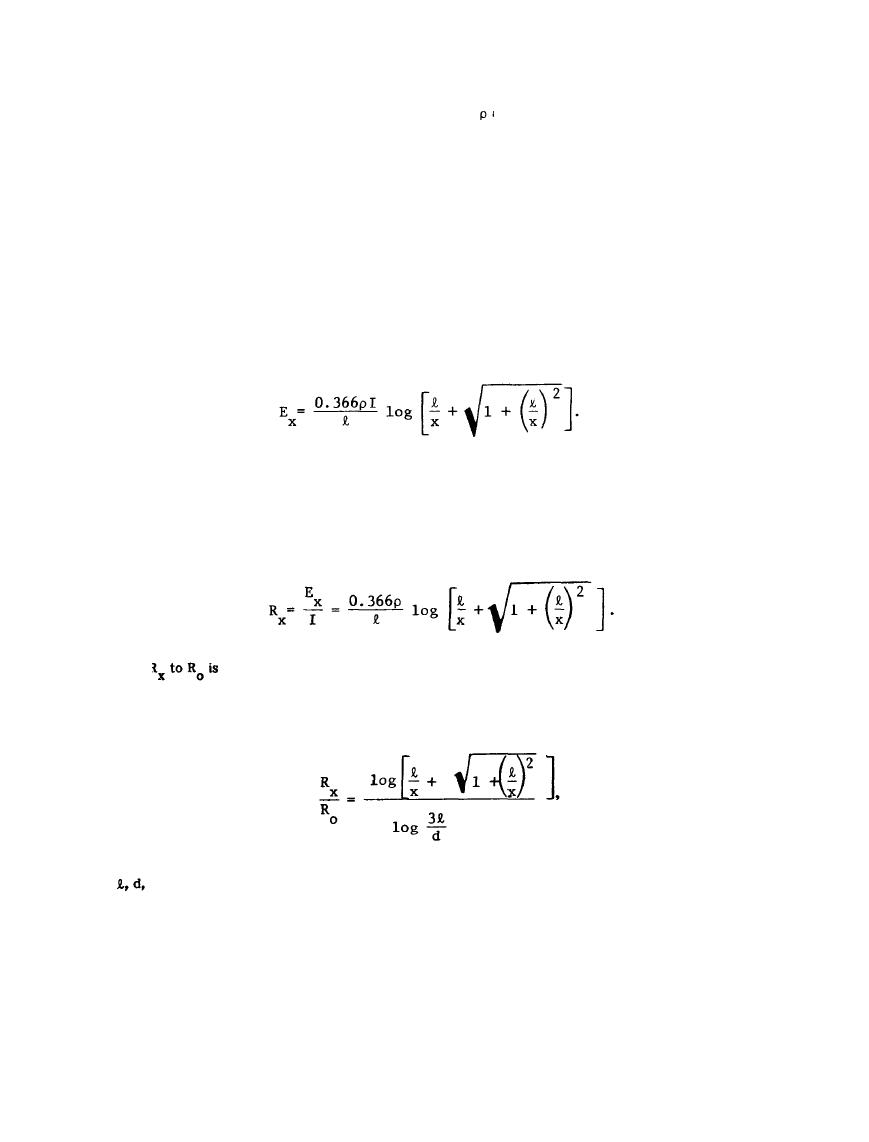

Custom Search
|
|

|
||
 MIL-HDBK-419A
which is a special form of Equation 2-1. The soil resistivity is and dr is the incremental path length in the
direction of current flow. The shell of earth nearest the electrode has the smallest area and thus exhibits the
highest incremental resistance. This fact has two practical ramifications. First, lowest earth resistance is
obtained with electrode configurations which have largest areas in contact with the earth. Second, changes
which occur in the soil adjacent to the conductor have a significant effect on the electrode-to-earth contact
resistance. For example, lightning discharge currents may heat the soil adjacent to the conductors, drying the
soil or converting it to slag and thus increasing the electrode resistance to earth. One reason for providing a
large contact area between the electrode and the earth is to minimize the current density in the soil
immediately adjacent to the electrode, thus reducing the heating of the soil.
The current which flows into the ground rod flows outward through each equipotential shell, and the potential
on the earth's surface at a distance, x, from the rod is (2-3)
(2-18)
The ratio Ex/I is equivalent to Rx, that portion of resistance-to-ground of the rod which lies between the point
X and infinity:
(2-19)
The ratio of
(2-20)
where
and x are in the same units.
2-19
|
 |
|
 |
||